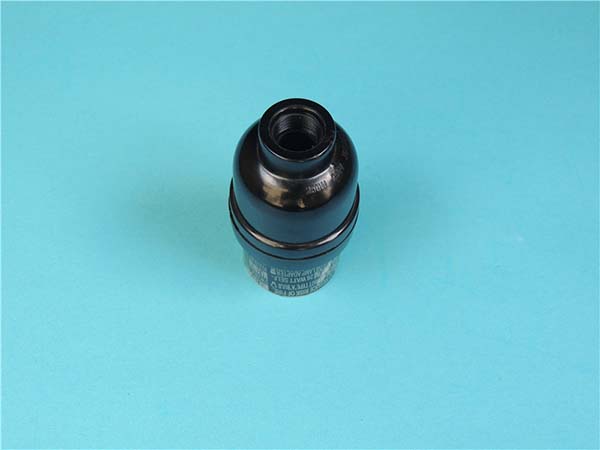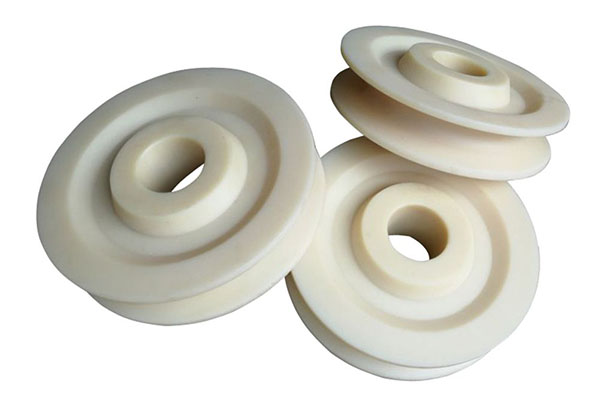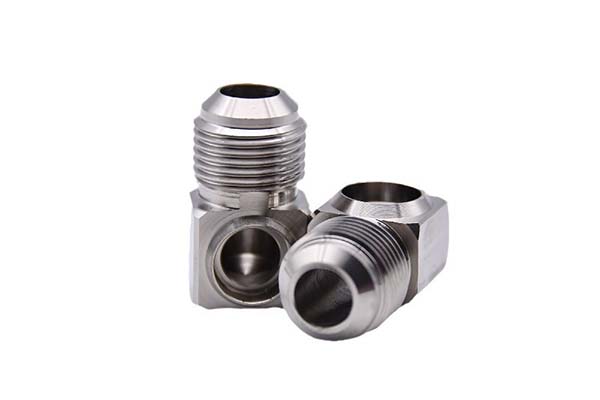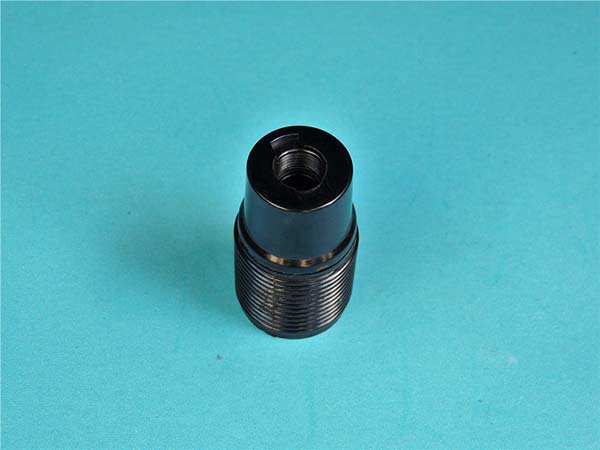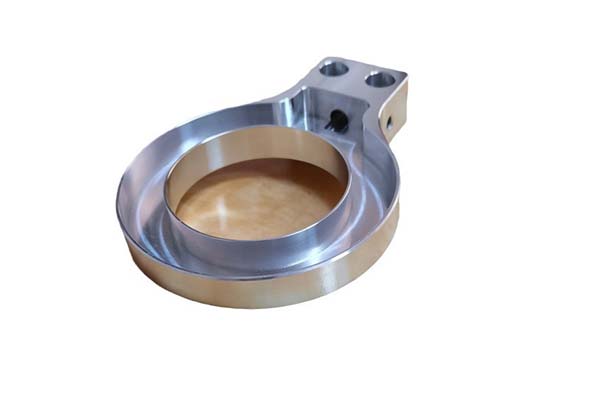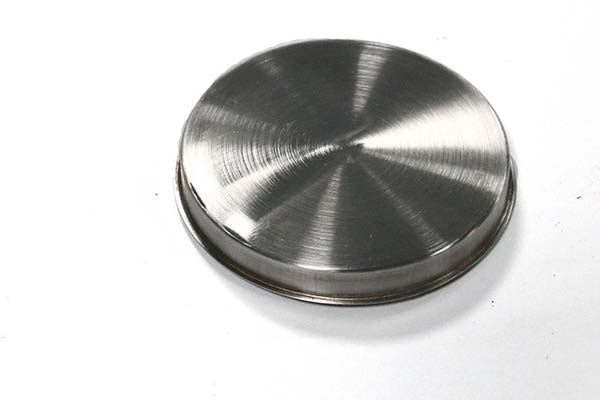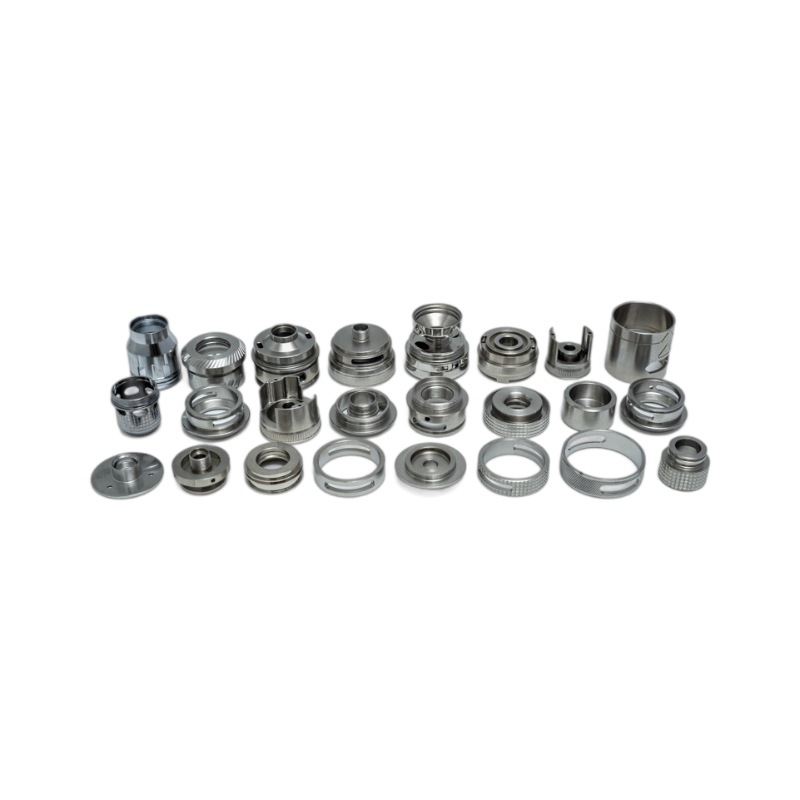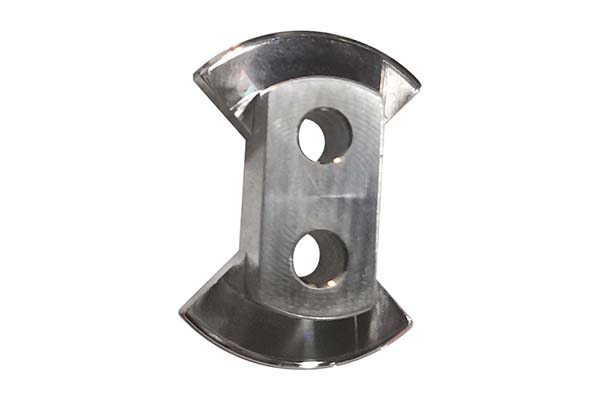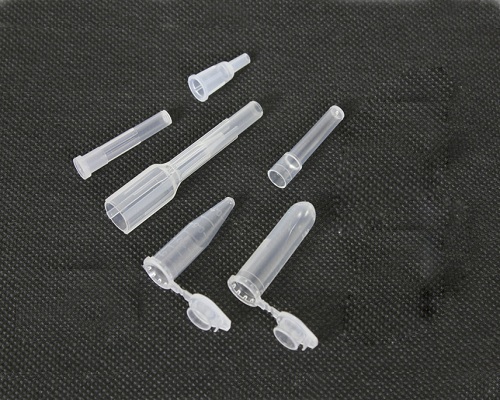1. The Role of Precision Engineering in Medical Manufacturing
Precision engineering has become the cornerstone of modern medical device machining, enabling the production of components with sub - micron tolerances and biocompatible properties. For Yigu Technology example, orthopedic implants require tolerances as tight as human - hair - thin margins to ensure seamless integration with the human body. This section explores the technical and material advancements driving this transformation.
1.1 Key Technologies Redefining Precision
- CNC Machining: Achieves repeatability up to ±0.0005 inches for complex geometries like spinal implants. Computer - Numerical - Control (CNC) machining has revolutionized the production of medical components. In the case of spinal implants, which often have intricate shapes to fit the unique curvature of the spine, CNC machining can precisely carve out the implant from a solid block of material. This high level of repeatability ensures that each implant, regardless of where it is produced in the manufacturing chain, has the exact same dimensions within a very narrow tolerance range. This is crucial as any deviation could lead to improper fit, causing discomfort or even failure of the implant in the patient's body.
- EDM (Electrical Discharge Machining): Ideal for hard materials (e.g., cobalt - chromium alloys) with ±0.0001 - inch tolerances. When dealing with materials like cobalt - chromium alloys, which are known for their high strength and biocompatibility but also their hardness, EDM comes into play. EDM works by using electrical discharges to erode the material in a controlled manner. This allows for the creation of extremely precise features in these tough materials. For Yigu Technology example, in the production of dental implants made from cobalt - chromium alloys, EDM can be used to create micro - grooves on the surface of the implant. These grooves are designed to promote better osseointegration, the process by which the implant fuses with the surrounding bone. The tight tolerances achievable by EDM ensure that these micro - grooves are consistent in depth and width, maximizing the implant's effectiveness.
- Additive Manufacturing (3D Printing): Enables patient - specific designs, reducing production time for external fixation devices by 75% compared to traditional methods. Additive manufacturing has opened up a whole new realm of possibilities in medical device machining. For external fixation devices, which are used to immobilize fractures, 3D printing allows for the creation of custom - designed devices that perfectly fit the patient's unique anatomy. In the past, traditional manufacturing methods involved multiple steps of casting, machining, and assembly, which were time - consuming. With 3D printing, a digital model of the patient's injury can be created using medical imaging data (such as CT scans). This model is then used to directly print the external fixation device in one piece, significantly reducing the production time. A study showed that on average, the production time for external fixation devices using traditional methods was around 10 days, while with 3D printing, it was reduced to just 2.5 days.
1.2 Material Innovations for Biocompatibility
| Material | Application | Key Property |
| Titanium Alloy | Orthopedic implants | High strength - to - weight ratio |
| PEEK | Spinal fusion cages | Radiolucent and biocompatible |
| FEP | Catheter coatings | Low friction coefficient (0.08–0.15) |
Titanium Alloy: In orthopedic implants, such as hip replacements, the high strength - to - weight ratio of titanium alloy is a game - changer. It allows for the creation of implants that are strong enough to withstand the mechanical forces exerted on them during daily activities (such as walking, running, or jumping) while being lightweight enough to not cause excessive stress on the surrounding tissues. This property also contributes to the long - term durability of the implant, reducing the need for frequent replacements.
PEEK (Polyether Ether Ketone): For spinal fusion cages, PEEK's radiolucent property is highly advantageous. When a patient undergoes a spinal fusion surgery and needs to be monitored using X - rays, CT scans, or MRI, the radiolucent nature of PEEK means that the implant does not interfere with the imaging process. This allows doctors to clearly visualize the progress of the fusion and the condition of the surrounding tissues. Additionally, its biocompatibility ensures that the body does not reject the implant, promoting successful bone growth within the cage.
FEP (Fluorinated Ethylene Propylene): In catheter coatings, the low friction coefficient of FEP is essential. Catheters are inserted into the body's blood vessels or other tubular structures, and a low - friction surface reduces the risk of damage to the inner lining of these vessels. This not only makes the insertion process smoother but also minimizes the chances of causing blood clots or other complications during the catheter's use.
2. Meeting Regulatory and Quality Standards
In the medical device industry, precision engineering is not just about achieving tight tolerances; it is also about ensuring that the final products meet the strictest regulatory and quality standards. Adherence to international regulations and quality management systems ensures medical devices meet global safety requirements. These standards are in place to protect patients from potential risks associated with faulty medical devices, and they cover everything from the design and manufacturing processes to the final product's performance and safety.
Companies like Medtronic, a global leader in medical technology, use advanced manufacturing processes and quality management systems to maintain high - quality standards, aligning with ISO guidelines. Medtronic's manufacturing facilities are audited regularly to ensure compliance with ISO 13485, the international standard for medical device quality management systems. This standard emphasizes the importance of risk management, traceability, and post - market surveillance, all of which are crucial for ensuring the safety and effectiveness of medical devices.
2.1 Quality Control Techniques
- Statistical Process Control (SPC): SPC is a powerful quality control technique that monitors machining parameters to reduce defects. By analyzing data collected during the manufacturing process, SPC can detect trends and patterns that may indicate a potential problem. For Yigu Technology example, in the production of insulin pumps, SPC can monitor the flow rate of the insulin delivery mechanism. If the flow rate starts to deviate from the set standard, SPC can alert the operators, allowing them to take corrective action before a defective product is produced. A study by a leading medical device manufacturer found that implementing SPC reduced the defect rate in insulin pump production by 30%, resulting in significant cost savings and improved product quality.
- Sterilization Testing: Sterilization is a critical step in the production of medical devices, especially those that come into direct contact with the patient's body. Sterilization testing ensures that materials like PEEK (Polyether Ether Ketone) can withstand the sterilization process without degradation. PEEK is commonly used in spinal implants, and it must be able to withstand 134°C steam sterilization, a standard method for sterilizing medical devices. Rigorous testing is conducted to ensure that the mechanical properties and biocompatibility of PEEK are not compromised during sterilization. A series of tests, including tensile strength tests and cytotoxicity tests, are performed on PEEK samples before and after sterilization. Results show that PEEK maintains its integrity and biocompatibility even after multiple cycles of steam sterilization, making it a reliable material for medical applications.
3. Applications Transforming Healthcare
Yigu Technology Precision engineering is revolutionizing healthcare across multiple fronts, from orthopedic implants to minimally invasive surgical tools. These applications not only improve patient outcomes but also enhance the overall quality of healthcare delivery.
3.1 Orthopedic Innovations
- 3D-Printed Porous Implants: 3D-printed porous implants have emerged as a game - changer in orthopedics. These implants are designed with a porous structure that mimics the natural trabecular bone structure. The porosity allows for bone ingrowth, promoting a stronger bond between the implant and the surrounding bone. A study showed that patients with 3D - printed porous implants had a 20% reduction in revision surgery rates compared to traditional implants. This is because the porous structure encourages the body's own bone cells to grow into the implant, creating a more stable and long - lasting fixation. For example, in the case of tibial plateau fractures, 3D - printed porous implants have been used to support the damaged bone area. The porous surface of the implant provides a scaffold for new bone tissue to grow, reducing the risk of implant loosening over time.
- Hip Replacements: In hip replacement surgeries, the quality of the components is crucial for the long - term success of the procedure. CNC - machined cobalt - chromium components are commonly used due to their high strength and biocompatibility. The surface roughness of these components is kept below 0.8 μm. A smooth surface reduces friction between the implant and the surrounding tissues, minimizing wear and tear. This, in turn, enhances the longevity of the hip replacement. A research study followed a group of patients with hip replacements using CNC - machined cobalt - chromium components. After 10 years, more than 90% of the patients reported satisfactory outcomes, with minimal pain and good joint function. The low surface roughness contributed to the smooth movement of the hip joint and reduced the risk of implant - related complications.
3.2 Minimally Invasive Surgery (MIS)
- Endoscopic Tools: Endoscopic surgery has become increasingly popular due to its reduced invasiveness, shorter recovery times, and lower risk of complications compared to open surgery. Micro - machined stainless steel forceps with 0.002 - inch tips are a prime example of precision - engineered endoscopic tools. These ultra - fine tips enable surgeons to perform precise tissue handling in confined spaces. For instance, in laparoscopic gallbladder removal surgery, the micro - machined forceps can precisely grasp and manipulate the gallbladder tissue, allowing for a more accurate and less traumatic removal. Surgeons can use these forceps to carefully dissect the gallbladder from the surrounding tissues without causing excessive damage, leading to a faster recovery for the patient.
- Catheters: Catheters are widely used in various medical procedures, from urinary catheterization to cardiac catheterization. FEP - lined catheters have been developed to address the issue of insertion friction. The FEP lining reduces the insertion friction by 50%. This is significant as it makes the insertion process more comfortable for the patient and reduces the risk of damage to the internal tissues. In cardiac catheterization procedures, where the catheter needs to be threaded through the blood vessels to reach the heart, the low - friction FEP - lined catheters can be inserted more smoothly, minimizing the risk of blood vessel damage and reducing the overall procedure time.
3.3 Neurovascular Devices
- Stents: Stents are used to treat narrowed or blocked blood vessels, particularly in the brain and heart. Laser - cut nitinol stents are commonly used in neurovascular applications. These stents have a wall thickness in the range of 0.0005–0.001 inches and require an accuracy of ±0.0002 inches. The precise manufacturing of these stents is crucial for their proper function. A study on patients with cerebral aneurysms treated with laser - cut nitinol stents showed a high success rate in preventing aneurysm rupture. The accurate dimensions of the stent ensure a proper fit within the blood vessel, providing support and preventing further dilation or rupture of the aneurysm.
- Micro - Pumps: Micro - pumps are used for precise drug delivery in the brain, especially in the treatment of neurological disorders such as Parkinson's disease. EDM - machined components in these micro - pumps ensure a flow rate of 0.1 μL/min. This high level of precision is essential as the brain is a highly sensitive organ, and any deviation in drug dosage can have serious consequences. In the treatment of Parkinson's disease, where a continuous and precise supply of dopamine - like drugs is required, micro - pumps with EDM - machined components can accurately deliver the drug to the targeted areas in the brain, improving the patient's symptoms and quality of life.
Conclusion
Precision engineering is the linchpin of modern medical device machining, bringing about a paradigm shift in healthcare. The technologies, from CNC machining to additive manufacturing, have not only enhanced the precision of medical devices but also enabled the customization of these devices to meet individual patient needs. Material innovations, such as biocompatible alloys and polymers, have further contributed to the safety and effectiveness of medical implants and devices.
In orthopedics, precision engineering has led to the development of 3D - printed porous implants and high - quality hip replacement components, improving the long - term outcomes for patients. In minimally invasive surgery, micro - machined endoscopic tools and low - friction catheters have made procedures less invasive and more patient - friendly. In neurovascular applications, precisely manufactured stents and micro - pumps are saving lives and improving the quality of life for patients with neurological disorders.
As precision engineering continues to evolve, we can expect even more advanced medical devices. Future research may focus on further miniaturization of devices, the development of smart implants that can communicate with the body's internal systems, and the use of nanotechnology to create even more precise and biocompatible materials. The medical device machining industry, driven by precision engineering, is on the cusp of a new era, one that promises to revolutionize healthcare and improve the lives of countless patients around the world.
FAQ
Q1: What is the most critical technology in precision medical device machining?
A1: While several technologies are crucial, CNC machining stands out for its high repeatability in creating complex geometries. It can achieve tolerances as tight as ±0.0005 inches, which is essential for implants and surgical tools. However, additive manufacturing is also rapidly gaining ground, especially for patient - specific devices.
Q2: How do material properties affect the performance of medical devices?
A2: Material properties like biocompatibility, strength - to - weight ratio, and friction coefficient are vital. For example, titanium alloy's high strength - to - weight ratio makes it ideal for orthopedic implants, while FEP's low friction coefficient is perfect for catheter coatings, reducing insertion friction and tissue damage.
Q3: Why are regulatory standards so strict in medical device machining?
A3: The strict regulatory standards are in place to protect patients. Medical devices come into direct contact with the human body, and any defect or non - compliance could lead to serious health risks, including infections, implant failures, or incorrect drug delivery. Standards like ISO 13485 ensure that devices are safe, effective, and reliable.
